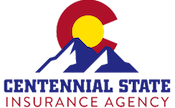Preparing for a Wildfire
Last week we talked about some things you can do long before the danger of wildfire hits your area. This week we have some tips for preparing for a potential evacuation and what to do after a wildfire. It is very important to make sure your insurance is at the correct coverage amounts before a wildfire hits your area. Once an area has an active wildfire you can not make any changes to your coverages or issue a new policy.
Evacuation Prep
Being evacuated from your home is scary and is often comes with little notice. The best thing you can do, is prepare for fire season, which will help an evacuation go as smooth as possible.
Start By Preparing an Evacuation Bag
In the bag you want to include:
- Irreplaceable items, such as family heirlooms, one of a kind items, and family pictures. An alternative to packing up framed pictures is to keep digital copies of all your pictures on a flash drive and packing the flash drive (don’t forget to update the flash drive every year).
- ID’s, licenses, passports, social security cards and other valuable documents.
- Keep a backup sets of keys in the bag so you aren’t floundering to find them.
- Have a list of important phone numbers, such as your bank, insurance company, doctor and emergency contacts. Some people prefer to pack copies of their insurance or other policies but having the policy numbers would be enough information.
- Important logins and passwords will allow you to access any accounts on the fly.
Prepare a List of Items You Use On a Daily Basis
Having a list of items that can’t be prepacked will help you grab these important items faster and reduce the number of forgotten items. The list should include things like:
- Laptop or tablet and phone or computer chargers
- Medicine, glasses/contact and toiletries
- A few days of clothes
- Water and snacks
- Money and credit cards
- Keep the evacuation bag in a secure, but easily accessible area of your home
Have a Plan For Your Pets
There are window stickers you can purchase that will notify firefighters of how many animals you have in your home if you are not able to take them with you, or if you are not home at the time of the fire.
- Place crates and carriers where they are easy to grab, and practice loading your pets into the carriers, so they are comfortable with the process.
- Know how much room you have in your vehicle for your evacuation bag and pet carriers and plan accordingly.
- If you have livestock and horses, you may not have time to load them in trailers and evacuate them with you. Have a plan for these animals. There are organizations that help with animal evacuation, contact them and see how they can help.
Other Things You Can Do To Prepare
- Make your home accessible to firefighters. Clear extra cars, ATVs, boats, campers and any other large objects from your driveway and around your house so that fire trucks can get close and turn around.
- Move flammable objects like paint cans and ammunition to a shed or detached garage.
- Take the extra measure of moving high value jewelry, paintings, heirlooms or other irreplaceable items to off site storage units or safety deposit boxes during fire season so you don’t have to worry about these investments.
- Speak with neighbors, good friends and family members about your wildfire evacuation plans. Where do you plan to go if evacuated for a few days? What if it turns into a few weeks? Do they have your phone numbers to contact you if needed?
- Sign up for your county’s Code Red program so that you will be contacted in the case of an evacuation, and make sure you have other county services phone numbers for emergencies.
It is a great idea to practice an evacuation, especially if you have children and pets. Set a time to pretend that the call comes in and that you have 15 minutes to vacate the premises. Grab your evacuation bag, children and pets. Set a rendezvous point if you have multiple drivers and vehicles. This is a great exercise to realize how fast an evacuation can happen and to see what areas you may need additional preparation for.
After the Danger Has Passed
The fire danger is gone, and because of your preparation your family was safe. You can now return to your home. Upon returning home it is important to walk around your property. Depending on how close the fire came to your home, there may be areas that smolder for days. Be diligent and watch for any signs of fire. Check your home inside and out for signs of fire or smoke damage. You should also check for signs of theft or missing items from the home. If you have any doubts about damage or theft, call your insurance agent to discuss a course of action.
After a wildfire, there is an increased chance of mud slides, earth movement and water damage. Because the vegetation has burned off, the ground becomes unstable. Most insurance policies exclude coverage for flood and earth movement. It is important to be aware of these restrictions and mitigate the possibility of damage to your property.
Written by: Centennial State Insurance Agency, Bailey
